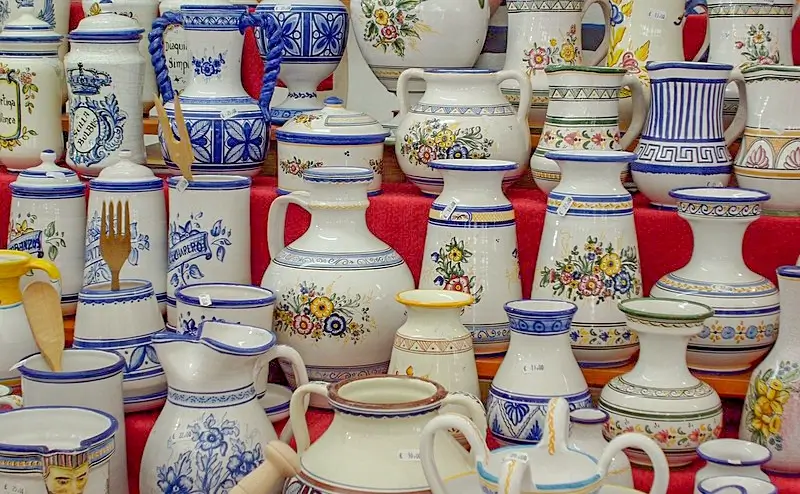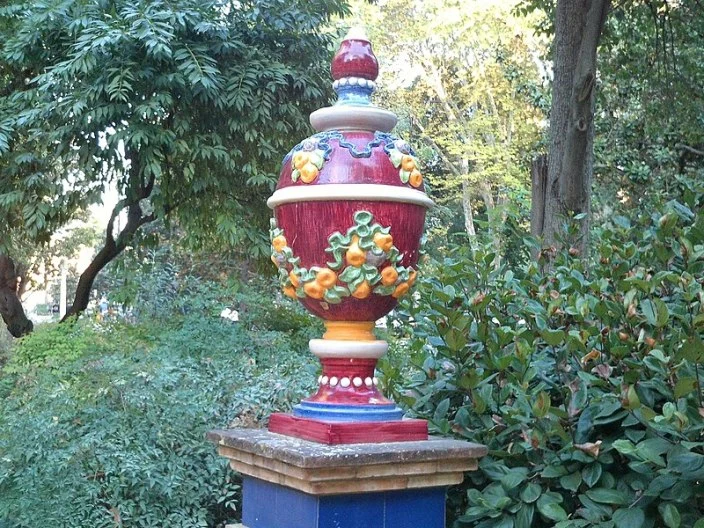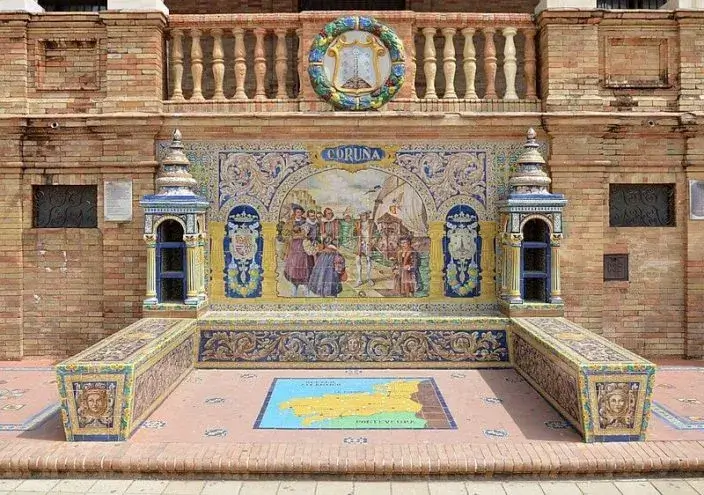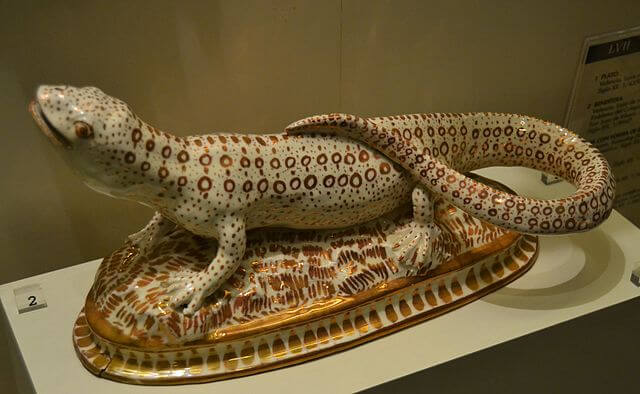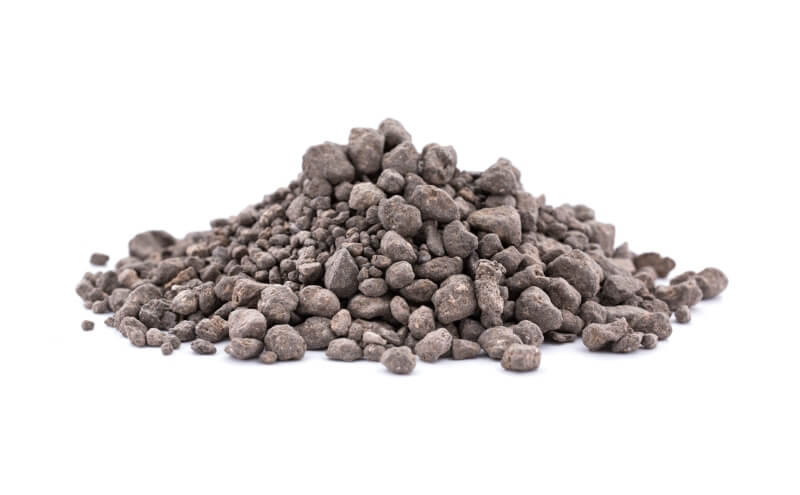SPANISH POTTERY
THE COMPLETE GUIDE
Collection of Spanish ceramic pieces
Adapted from Lourdes Cardenal, cc-by-sa-4.0
We welcome you to a journey through Spanish ceramics, a fascinating art of great relevance throughout its history. A mainstay of its industry and economy.
We are going to tell you about its origins, the most important workshops and schools along its geography and also about the main companies that work with this material.
Ceramics is and will be the backbone of Spanish culture, society and economy. You will see the different types of pottery that have evolved in the different regions and also where you can visit the most emblematic pieces of great historical value.
HISTORY OF SPANISH CERAMICS
We travel to the Neolithic, to the first human settlements in the Iberian Peninsula, who needed to store what was collected from an incipient agriculture, the first concave forms to contain elements began to be worked, using clay and, mostly, the pinching technique, among others. It was left to dry in the sun or near bonfires; these were the beginnings of Iberian ceramics.
Soon the first ovens were built in the ground, which was a way to bury the fire and accumulate the heat of these fires, without suffocating the combustion.
Before the Muslim invasion in 711, ceramics were mass-produced in the South and East Coast of Spain, including tiles, functional elements, mosaic pieces, fountain structures, roof tiles, etc.
Beautiful handcrafted mosaics were made for churches and palaces throughout Spain, an art that took Spanish culture and decoration to another level. It was later developed and extended to Spanish homes in floors, kitchens, bathrooms and, above all, interior patios.
After the defeat of the Invincible Armada in the 16th century (1588), Spain began to cease to be an empire, rich in natural resources, including ceramics.
This decline plunged the country into deep economic and political difficulties. The influence of the neighboring Atlantic countries increased in the Mediterranean and the expulsion of the Moors had catastrophic effects on the economy and culture of the Spanish tiles.
The decline of Spanish ceramics continued into the 17th century. Paradoxically, some of the highest quality and artistic mosaics were made during this time.
Glazed tiles were made glazed with metallic oxides, which help to protect the surfaces, making them durable and also shiny, as well as beautifully designed. The term for a characteristic type of tin-glazed ceramic tile is “majolica”, which is distinguished by a milky white glaze.
This type of tile, a contribution of Islamic culture, became known as “Talavera”, after the Spanish ceramic center of Talavera de la Reina, in Castilla la Mancha. An example of the art in Talavera in the 18th century would be the religious tiles of the workshop of José Mansilla el Pino Placa, for example the Virgen de Nuestra Señora del Socorro (in the Museum of Ceramics “Ruiz de Luna”, Talavera de la Reina).
Spain began exporting its ceramics from Andalusia. Within this, the neighborhood of ‘Triana’ in Seville was the center of many renowned workshops, some are not active today, however any visitor can see the production in this artistic focus wherever he goes: squares, homes, restaurants, and especially in places of religious worship.
This art, inherited from the Arab culture, with highly valued tiles, was shipped in boats all over the Mediterranean, to different countries in Europe and, later, the world.
One of the supreme recipients of this tradition was Mexico, with its center in the colonial capital of Puebla. A key place where a large number of pieces arrived was Puebla, Mexico.
Ceramics in Spain has evolved hand in hand with industrial and technological progress, reaching a position of worldwide relevance in the economic and artistic sector.
We are going to talk about some of the most important schools and styles of the Spanish pottery tradition.
POTTERY TRADITIONS IN SPAIN
Polychrome ceramic urn in the Maria Luisa Park. Seville
By CharlesVofHabsburg/ CC BY
Seville Ceramics
Sevillian pottery has been a fundamental part of the culture, society and industry of this city. Since the time of the Iberians, various types of pieces were already being created, and part of the work was exported to Rome.
During the Muslim period, glazed ceramic friezes were made with a glaze that had a beautiful metal effect due to the tin included in its composition.
Because the mosaic technique was very laborious and costly, some historians speak of the invention of the cuerda seca technique (which consists of delimiting parts of the surface with strokes made with a greasy material, and once these independent zones were defined, different color formulas were applied without the risk of mixing them) as a method of optimizing time and resources and achieving a mosaic-like effect without the need to fit the different pieces, called tesserae.
After the reconquest, the pottery tradition continued incorporating techniques and expanding exports. As a curiosity, the word potter is considered to come from the Arabic name al-fahar.
The Sevillian tradition had its epicenter in the ceramics of the Triana neighborhood, which we will talk about later.
Sevillian ceramic coasters, glazed using the cuerda seca technique.
From Ceramic from Spain
Triana:
This neighborhood of Seville, next to the Guadalquivir River, has a great pottery tradition, being the cradle of great workshops of long trajectory.
Pottery has been the main industry in this neighborhood, which has traditionally manufactured tiles, tiles, earthenware and other utensils. This tradition was enhanced by the characteristics of the soils of this area of Seville, rich in a very suitable clay to be worked in pottery.
There is evidence of pieces from the Almohad period in the twelfth century and the use of tiles was common in the decoration of facades from the fifteenth century. In the 19th century an important earthenware factory was built, which boosted the industry in the area, reaching the beginning of the 20th century with 24 factories dedicated to ceramics.
There you will find the well-known Triana Ceramics Center, which we told you about in this guide.
Ceramics from the Plaza de España in Seville:
This famous square is the final result of several projects that followed one another since 1911 during the gestation of the Ibero-American Exposition, held in 1929, and was one of its main constructions.
Here you can see the well-known ceramic-covered benches of the 48 Spanish provinces, not including Seville, showing murals and coats of arms of each one. It is a place that deserves a visit if you are in the city.
There you will also find the warehouse of tiles, where in addition to an infinite number of pieces, there are murals representative of some provinces which it was decided, in that year 29 of the last century, do not place them in the square, in plain sight of the public The motifs and scenes they depicted were not in keeping with the values they wished to convey.
Granada ceramics:
Granada has a rich pottery tradition, heir to the Andalusian pottery, which would be the Hispano-Muslim production made in al-Andalus (Iberian Peninsula) between the eighth and fifteenth centuries.
Since ancient times they used glazing techniques, their tiles with metallic finishes were known in different parts of Europe. Many of these pieces used the cuerda seca technique, a legacy of Andalusian ceramics. Another technique that began to be used in the pottery of Muslim Hispania at the time is sgraffito.
The metallic reflections typical of Granada ceramics can be seen in the well-known Alhambra vases or Nasrid vases, a beautiful example of gilded earthenware.
Ceramic bowls Fajalauza, Granada
By Lourdes Cardenal / CC BY
Fajalauza:
Special mention should be made of this type of Granada production, whose name comes from the place where the city’s pottery workshops were located, in the Realejo and the Albaicín, and which was near the Fajalauza Gate, during the Nasrid period.
After the Castilian conquest (1492), all the workshops were moved to the Albaicín, where most of the Moorish population lived. In 1609, this Moorish population was definitively expelled from the Iberian Peninsula, and their pottery workshops and production were confiscated.
Afterwards, new pottery creation began at the site, using new forms and additional techniques, beginning what we know as Fajalauza pottery.
Fajalauza is a type of pottery that attracts great interest, to the point that its pieces are considered one of the hallmarks of the city of Granada. Fajalauza pottery is mainly functional, although over time it has acquired a greater aesthetic value.
All the vessels are covered with a layer of white enamel, which gives them a characteristic finish. Once enameled, a series of different colored pigments are applied as decoration, with motifs that have evolved over time according to fashion, varying from simple themes to more naturalistic and variegated ones.
Fajalauza pottery is today considered a key heritage element of the culture and society of the city of Granada, being promoted and disseminated beyond its borders.
Lizard, piece with metallic reflections, National Museum of Ceramics, Valencia.
By Joanbanjo/ CC BY
Ceramics in Valencia
Valencia, World Design Capital in 2022, has been an area of great wealth and pottery tradition. Valencian pottery was born with the first settlements, the oldest remains that are preserved are more than 7,000 years old.
Techniques such as impressed pottery and the use of the potter’s wheel were known as early as the Iberian period. A Valencian locality with a marked production at the time was Kelin (what today is Caudete de las Fuentes).
Valencia was one of the major areas of Spanish ceramic production during the 15th century, continuing its growth until the upturn in its art in the 18th century, when the Royal Earthenware Factory of L’Alcora was founded.
This enormous impulse led to the growth of pottery production in neighboring areas such as Vilafamés, Onda and Manises. This progression continued in the 19th and 20th centuries, with great emphasis on tile production.
Manises:
The ceramics of Manises, a town located near Valencia, within the province, has been a reference for hundreds of years in the artistic production of tiles and other types of pieces of Spanish ceramics.
Brought by the Arabs, its production began in the 14th century and lasted until the 18th century. The delicate pieces mixed Muslim and Christian influences and were famous outside Spain as well. Intense blue, its characteristic color, was common in this ceramic.
Production declined in the 19th and 20th centuries. However, pottery remains one of the most important references of the city and its artistic production can still be seen in various parts of the city. There are still many good pottery workshops in Manises.
For example, Avenida Blasco Ibáñez is famous, where large tile panels can be seen on both sides of the street depicting images from the novels of this famous writer. The panels, which are 1.5 meters high and 1.5 meters long, show the best of Spanish literature and visual art. In this avenue you can also see a cross made of large tiles.
In the area there are also several ceramic stores where a great variety of works are exhibited. It is worth seeing their shop windows and the tile work that can be seen in the surrounding area.
It is also advisable to see the richly decorated Tourist Office and the municipal market.
The Municipal Museum of Ceramics, on Sagrari Street, exhibits the different techniques used in Spanish ceramics over the centuries. Contemporary ceramic pieces can also be seen on the upper floor.
Ceramics in Madrid
Ceramics in Madrid is very old, as it happens in different parts of Spain.
The first pieces were already being made before the Roman Empire, but it was in Roman times when the kilns were perfected and objects of better quality and resistance could be made. The remains of some mosaics from this period, found in Alcalá de Henares, have survived to the present day.
Many of the preserved pieces of ancient pottery can be visited at the National Archaeological Museum.
This pottery had a great activity in the area of Madrid, whose workshops were supported by King Philip II. However, an important upturn in its quality and refinement was the foundation of the Royal Porcelain Factory of Buen Retiro, in the 17th century.
During the eighteenth and nineteenth centuries there was a large production of earthenware and jars for the guild of “water carriers” of Madrid, which was the germ of the current Isabel II canal.
Ceramics also had a great presence in the architecture of the city, a well-known example is the house of Don Tomás de Allende or the original headquarters of the ABC newspaper.
Mosaics and tiles were an important part of the advertising of the time, many are still preserved today, such as those in some stations of the Madrid Metro.
A ceramic work worth visiting is the one in the house of the painter Joaquín Sorolla, the work of Ruiz de Luna and Enrique Guijo, two well-known ceramists of the capital, among others, such as Daniel Zuloaga.
Later, Guijo, together with Alfonso Romero, carried out a large number of commercial works that today can be seen on facades in different parts of the streets of the city.
Ceramic bench at the Casa Museo Sorolla in Madrid
Adapted from
Luis Garcia
/ CC BY
Talavera Ceramics
Within Spanish ceramics we have this important school that comes from the town of Talavera de la Reina, in Toledo, Spain. Its origins date back to the time of the Roman Empire, where the production of pottery pieces began in the area, later incorporating techniques such as Italian, introduced by Flemish ceramists.
From the 16th century on, it was a handmade ceramic that became more and more famous up to the present day. Some authors include under this denomination the works of ceramic style of El Puente del Arzobispo, a town near Talavera, but the majority current is to separate these two schools.
The truth is that the term “De Talavera” or “talaverano” (officially declared by UNESCO as intangible cultural heritage of humanity) includes the works produced in these two localities, plus the important production made in Mexico, in the localities of Tlaxcala y Pueblamainly in the same style as the one made in Spain.
The pieces were originally painted in blue, using cobalt, which was one of the most appreciated pigments; with time, the 6 colors currently used were used: green, orange, black, mauve, mauve, yellow and the aforementioned blue.
Example of ceramics from Puente del Arzobispo
Archbishop’s Bridge
The pottery of El Puente del Arzobispo was born in this town, today a municipality in the province of Toledo, around the 15th century. It is located next to Talavera de la Reina, in the same province. Both are the most renowned and traditional localities in Spanish pottery.
It had a great boom during the seventeenth and eighteenth centuries, with earthenware being its main production.
As in Seville, the pottery tradition goes hand in hand with the location of the workshops, that is, located in urban centers, with resources, and, mainly, next to a river, in this case, the Tagus, which provides abundant water, enough vegetation to supply wood for the kilns, and a high quality clay.
The traditional pottery of El Puente del Arzobispo is characteristic for its decorative motifs and the colors used, the most frequent being images of animals and landscapes and greenish tones.
You can see below the work made by Robles from El Puente del Arzobispo, about Don Quixote. It can be found at Ceramic from Spain.




WHICH MUSEUMS TO VISIT
Here are some of the most relevant that you can find in this country with a rich and ancient pottery tradition.
Ceramics of Manises. National Museum of Ceramics and Sumptuary Arts González Martí.
Dorieo, CC-BY-SA 4.0
Valencia Ceramic Museum
In this city is the National Museum of Ceramics and Sumptuary Arts González Martí, named after this historian and draftsman who donated his own collection of ceramics to the government, establishing the first museum in his own home in 1947.
Subsequently, the state bought the Palace of the Marquis of Dos Aguas (a historical artistic monument) in Valencia and, after its restoration, the collection was definitively housed there in 1954.
The general public’s interest in this museum has been growing over this past decade. From 2010 to 2019, before the pandemic, the number of visitors per year to the National Ceramic Museum increased by 75,000 people, a rise of more than 60%. Having in that last year 184,379 visitors.
In 2020 it dropped to 61,097 (taking into account that it closed in April and May) and has fortunately recovered in 2021 reaching 96,199.
You can see here part of his ceramic collection. It also has sculpture, painting, furniture, textiles and clothing, among others.
National Museum of Decorative Arts
It began in 1912 as the National Museum of Industrial Arts, in the Madrid of the Austrias, in Sacramento Street, with the aim of promoting the market of Spanish artistic and handicraft products.
In 1934 it was moved, due to lack of space, to a 19th century mansion at number 12 Montalbán Street, which until that year had housed the Escuela Superior de Magisterio.
It is not exclusive to ceramics, but also houses collections of metalwork and silverware, ceramics, furniture, ivories, textiles, contemporary design and photography.
In 2021 it was visited by almost 49,000 people.
Triana Ceramic Museum
Triana is a neighborhood in the province of Seville, next to the Guadalquivir River, there was founded in 2014 this museum, on the pottery complex that was the headquarters of the company Cerámica Santa Ana-Rodríguez Díaz S.L.
The Triana Ceramics Center (See CCT website) aims to disseminate the pottery tradition of this neighborhood and to bring value and diffusion in general to Triana.
It consists of two floors: the first floor describes the ceramic production process, showing the visitor how pottery was produced in Triana.
The second floor houses the permanent collection and has a temporary exhibition hall, in addition to hosting various activities, such as the Flamenco Biennial.
SPANISH CERAMIC MANUFACTURERS
Cerámica La Paloma
Heir to the tradition of Toledo, it was founded in 1979 dedicated to the manufacture of hollow bricks. Later acquiring “Cerámica 4 Palomas” (which produced hollow bricks) and Gres Acueducto (dedicated to the manufacture of this material), it consolidated in the 90’s as a relevant group in the sector.
In the following decades, the opening of new plants, the acquisition of other companies, constitute a constant expansion of a group that aspires to remain at the forefront of technology and new product launches. With a share capital of more than 122,000 €, Cerámicas La Paloma is among the top 8,000 companies in Spain.
Dominguez Ceramics
It was established in 1994. A Catalan company, Cerámicas Domínguez is among the top 21,000 companies in Spain.
With uninterrupted growth in recent years, this company located in the town of Rubí, in Barcelona, is dedicated to ceramics for kitchens, bathrooms, exteriors and the sale of construction materials.
Ceramica Equipe
A reference company in the floor and wall tile sector, Equipe Cerâmicas was founded in 1999.
Based in Figueroles (Castellón), Equipe is a company owned by Miura since 2018 and specializes in the design and production of small-format ceramic wall and floor tiles.
The Italian group Italcer bought the company in 2021.
Among the top 5,000 companies in Spain.
Sargadelos Ceramics
The Royal Factory of Sargadelos (a beautiful village in the province of Lugo) was founded in the early 19th century by Antonio Raimundo Ibáñez.
In the mid-twentieth century we speak of the sargadelos group, which was characterized by a production dominated by blue tones. In this case this name is given both to the commercial brand and to the origin of a type of ceramic.
Today it has two production plants and distributes its products not only in Spain, but also in other countries in America and Asia. The company has a share capital of more than one and a half million euros and is among the top 75,000 companies in Spain.
Vives Ceramics
Dedicated to the manufacture of ceramic tile, flooring and porcelain stoneware products, Vives Azulejos y Gres is located in Alcora (Castellón). It dates back to 1957.
Aparici Ceramics
Its origin is in the 40’s when Maximiano Aparici began to make handmade pottery, also in Alcora. It should be noted that this town was the cradle of great potters since the sixteenth century. Later the company was founded in 1961.
Today it is a company with an international presence.
You can see here a short and interesting video about how Sargadelos ceramics are made:
RANKING OF SPANISH CERAMIC MANUFACTURERS
We present an ordered list of some of the best known ceramic manufacturing companies in Spain, according to INFORMA D&B S.A.U., S.M.E.. This portal ranks the top 500,000 Spanish companies according to their sales figures.
| ORDER | MANUFACTURER NAME | POSITION |
| 1 | EQUIPE CERAMICAS S.L. | 4.095 |
| 2 | LA PALOMA CERAMICA Y GRES SL | 7.244 |
| 3 | CERAMICAS DOMINGUEZ SL | 20.151 |
| 4 | CERAMICA LA PALOMA SL | 33.428 |
| 5 | FABRICA DE CERAMICA DE SARGADELOS SL | 75.147 |
| 6 | VIVES AZULEJOS Y GRES, S.A. | No record |
| 7 | CERAMICAS APARICI SA | No record |
| 8 | APARICI CERAMICAS INTERNACIONAL SL | No record |
DATA TO 2023 FOR CERAMICS IN SPAIN
Exports in recent years:
During 2020 Spain exported ceramic floor and wall tiles for a total amount of 2,941 million euros. This is more than the export of meat, minerals or paper and only 20 million below the total amount of olive oil.
Then, in 2021, exports rose to 3.65 billion, 24% more than in the previous year.
Total turnover in that year was 4.8 billion euros.
Spanish tile consumption levels increased sales by 26% in 2021 according to Deloitte, who in turn forecast a 50% increase in exports to the US by 2022.
By contrast, in 2022, unemployment in the ceramics sector has increased, as it has in other sectors of the industry.
Nevertheless, the rate of decline during 2022 remains positive. Exports have increased compared to previous months. It is a time of cost overruns, due to the European geopolitical situation, but the demand for quality ceramics produced in Spain continues to increase.
TYPES OF CERAMICS
Still in use since ancient times, there is a wide variety of ceramic styles with different applications, uses and origins.
read more…
CERAMIC TECHNIQUES
Choose the initial composition, create the shape, the color and use the different firings. We explain the main methodologies used.
read more…
BALL CLAY
The basics you need to know about BALL CLAY. Its properties, different uses and applications.
read more…

